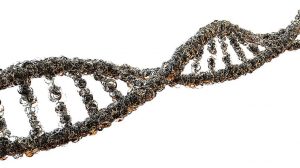Hiv –>
<a href="https://www.biologyonline.com/dictionary/human-Immunodeficiency“>virus
(Science: virology) a type of retrovirus (<a href="https://www.biologyonline.com/dictionary/human-Immunodeficiency“>virus) that is responsible for the fatal illness <a href="https://www.biologyonline.com/dictionary/acquired-Immunodeficiency“>syndrome. Two strains have been identified.
type 1: the retrovirus recognised as the agent that induces aids.
type 2: a virus closely related to hiv-1 that also leads to immune suppression. Hiv-2 is not as virulent as hiv-1 and is epidemic only in west Africa.
Acronym: hiv
infection by the human immunideficiency virus.The virus that causes <a href="https://www.biologyonline.com/dictionary/acquired-Immune”>deficiency Syndrome (aids); it replicates in and kills the helper t cells.See <a href="https://www.biologyonline.com/dictionary/human-Immunodeficiency“>virus.
Dictionary > Hiv
You will also like...

Human Perception – Neurology
This tutorial investigates perception as two people can interpret the same thing differently. Know more about human perc..

Human Reproduction
Humans are capable of only one mode of reproduction, i.e. sexual reproduction. Haploid sex cells (gametes) are produced ..

Genetic Mutations
This tutorial looks at the mutation at the gene level and the harm it may bring. Learn about single nucleotide polymorph..

Mammalian Ancestors
Mammals are a diverse group of organisms, where most of them develop their offspring within the uterus of the mother. Ov..

Circulation
The circulatory system is key to the transport of vital biomolecules and nutrients throughout the body. Learn about the ..

Growth Patterns
This tutorial describes the sigmoid curve, annual plant growth, tree growth, human growth, and insect growth as the grow..

